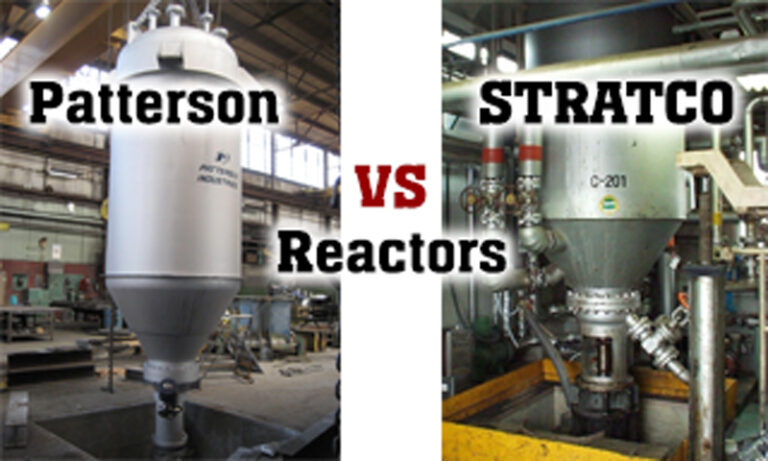Compare Patterson Industries vs. STRATCO reactors: design principles, grease/polymer production efficiency, and energy-saving features. Expert analysis for industrial applications.

Summary
The industrial reactor landscape features specialized equipment optimized for distinct chemical processes, with Patterson Industries and STRATCO emerging as key innovators. Patterson reactors excel in modular, customizable systems for resin synthesis and polymer production, while STRATCO’s Contactor™ reactor dominates lubricating grease manufacturing and alkylation processes through superior mixing efficiency and energy conservation. This article dissects their engineering designs, operational advantages, and scientific underpinnings, providing a granular comparison of their roles in modern chemical manufacturing.
Engineering Design Philosophies
Patterson Industries: Modularity and Customization
Patterson Industries (PI) prioritizes flexibility, offering reactors tailored to diverse industrial needs. Their systems range from 5-liter pilot-scale units to 5,000-gallon production reactors, accommodating processes requiring precise temperature control, vacuum operation, or high-pressure reactions. The 10-gallon stainless steel reactor exemplifies this approach, featuring 316 stainless steel construction, 300 PSI internal pressure tolerance, and dual heating/cooling jacket capabilities. PI’s design emphasizes:
Adaptable configurations: Reactors integrate agitation systems, thermal fluid reservoirs, and over-temperature protections.
Material versatility: Compatibility with corrosive substances via polished SUS 304/316 surfaces.
Scalability: Seamless transition from R&D to full-scale production through modular skid-mounted units.
STRATCO Contactor™: High-Shear Hydrodynamics
STRATCO’s reactor employs a closed-cycle turbulent flow path to achieve unparalleled mixing efficiency. The Contactor™ generates Reynolds numbers exceeding 50,000 through an impeller-driven recirculation loop, creating homogeneous dispersions even with viscous media. Key innovations include:
Dual-function heating/cooling jackets: Optimized heat transfer coefficients (≥500 W/m²·K) reduce energy consumption by 30–40% compared to conventional kettles.
Thickener optimization: High shear rates enable lithium soap concentrations as low as 3–5 wt%, versus 8–12 wt% in batch reactors, directly reducing raw material costs.
Pressure-vacuum flexibility: Single-vessel operation for saponification, dehydration, and product finishing.
Core Industrial Applications
Patterson Reactors: Polymer and Resin Synthesis
Patterson systems dominate in polymer production, exemplified by styrene-acrylonitrile copolymerization. Their reactors enable precise molecular weight control (e.g., 39,900–40,000 g/mol) via real-time DAQ monitoring of temperature (±0.5 K), monomer feed rates, and initiator concentrations. A typical process involves:
Charge preparation: Xylene solvent (40% v/v), styrene (45 wt%), acrylonitrile (10 wt%), and AIBN initiator (0.5 wt%).
Polymerization: 6-hour batch cycles at 343 K with jacket-proportional control maintaining ±1 K deviation.
Termination: Rapid cooling to 298 K using glycol-chilled jackets, achieving 98% monomer conversion.
For resin production, PI’s external coil reactors facilitate polyester synthesis via:
with water removal efficiency >95% through fractional condensation.
STRATCO Contactor™: Grease Manufacturing and Beyond
STRATCO’s flagship application—lithium grease production—leverages the reactor’s hydrodynamic advantages:
Saponification:

Water removal under vacuum (<50 mbar) achieves soap concentrations up to 25 wt% in 45 minutes.Dispersion phase: Base oil (ISO 220) incorporation at 130°C produces NLGI Grade 2 grease with worked penetration of 265–295.
Additive integration: Solid lubricants (MoS₂, graphite) achieve 99% dispersion homogeneity via multi-stage impeller speeds (500–1,200 RPM).
Performance Comparison: Efficiency Metrics
| Parameter | Patterson Reactor | STRATCO Contactor™ |
|---|---|---|
| Energy Consumption | 0.8–1.2 kWh/kg product | 0.5–0.7 kWh/kg product |
| Batch Cycle Time | 4–8 hours | 1.5–3 hours |
| Mixing Efficiency (CoV) | ≤5% | ≤2% |
| Temperature Uniformity | ±2°C | ±0.5°C |
| Maintenance Interval | 6–12 months | 18–24 months |
Operational Considerations
Maintenance and Longevity
STRATCO mandates OEM parts for impellers (tolerance <0.02 mm) to prevent shaft deflection >50 µm, which could reduce heat transfer efficiency by 15%2. Patterson’s seal-less magnetic drives minimize wear but require quarterly lubrication of bearing assemblies.
Safety Integration
Both systems prioritize hazard mitigation:
Patterson: Explosion-proof motors (ATEX Zone 1) and rupture disks rated at 110% MAWP.
STRATCO: Inert gas purging (N₂) during vacuum operations to maintain O₂ <2%.
Conclusion and Selection Guidelines
Patterson reactors excel in multipurpose, small-to-medium scale operations requiring frequent process changes, particularly in polymer/resin sectors. STRATCO’s Contactor™ is unmatched for high-volume, shear-sensitive processes like grease manufacturing, where energy efficiency and thickener optimization dictate profitability. Future developments may see Patterson adopting STRATCO’s hydrodynamic models to enhance mixing in viscous systems, while STRATCO explores modular designs for specialty chemical markets.
